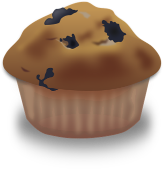It is well known that depression and internal tension are linked to low levels of a chemical messenger (neurotransmitter) called serotonin. Most modern antidepressants, and several meds used to treat anxiety, pain, or sleep disorders, are aimed at increasing levels of serotonin in the body. However, this is best done naturally by ensuring adequate amounts of its precursors in the diet, which include magnesium, vitamin B6 and the essential amino acid L-tryptophan (or supplementing with its derivative 5-HTP). Serotonin is converted into melatonin at night to help us sleep. For this reason serotonin generated by 5-HTP has been found to be helpful for individuals with sundowners syndrome associated with Alzheimer’s. (5-HTP is preferred over L-tryptophan for individuals with AD to avoid a metabolite of Tryptophan called “Quin,” which may not be good for individuals with the ApoE4 gene.)

L-tryptophan is found in most protein rich foods, including whole eggs, fish, turkey, chicken, and other meat, but also in nuts, seeds, oats, beans, lentils, milk, and cheese. However, when consumed in these foods, a relatively small amount makes it to the brain for conversion to serotonin. Simple carbohydrates actually facilitate this conversion.
That’s why, when people are anxious or depressed they often crave foods high in sugar or simple carbs—cookies, cake, candy, or ice cream—which contain both tryptophan and sugar. Therefore, to achieve a calming effect for people under stress, L-tryptophan or 5-HTP food supplements are usually more effective, often producing a calming effect within 45 minutes.
In one study with L-tryptophan, in addition to feeling better and sleeping better, healthy women given tryptophan for 14 days demonstrated increased recognition of happy faces and words and decreased recognition of negative words. This illustrates the impact that balancing body chemistry can have on perceptions and even memory.
Generally, 5-HTP works more quickly than tryptophan, and is less expensive. However, Life Extension researchers note: “Many people prefer using tryptophan combined with its essential cofactors lysine and niacinamide in lieu of 5-HTP. Tryptophan is better able to remain stable in the blood and cross the blood-brain barrier, where it is converted to serotonin. If 5-HTP converts to serotonin in the blood [which it may or may not do] this serotonin will not cross the blood-brain barrier.”
An effective dose of L-tryptophan to bring about calm is usually round 500 mg. The usual recommended or starting dose of 5-HTP is 50 mg daily, increasing every few days as tolerated. Most people do well with 100–150 mg daily, but the dose may safely go as high as 300 mg per day if needed. It is usually best to take it divided into two or three doses throughout the day, but if it is sedating it may be taken at night. However, a small number of people actually have trouble sleeping from 5-HTP, and should then take it early in the day.
These may best be absorbed if taken at least half an hour before meals, or bedtime with a small carbohydrate like fruit juice, white bread, or muffin. When taken before meals they can also reduce carbohydrate cravings. But if that is a hassle or causes stomach upset then they can be taken with meals. They are just not quite as powerful for alleviating stress that way.
Serotonin levels are also enhanced naturally by sunlight and exercise. This is why an afternoon stroll in the sun has been found to be quite helpful in promoting a relaxing evening and a good night’s sleep.

Consider Supplementing with SAMe
There is a substance created in our bodies from the B-vitamins 6 and 12, and inflammation in our body, that’s been shown to be extraordinarily effective in calming our nerves, reducing stress and lifting our mood. It’s call SAMe (s-adenosylmethionine). SAMe is a naturally occurring molecule found in all living cells which supports a host of chemical functions necessary for normal brain activity.
SAMe acts by several distinct and independent mechanisms to target multiple sites of action in brain cells that are involved in creating the chemistry of anger aggression and depression. Studies show that it’s exceptionally low in most seniors, especially those with Alzheimer’s.

Some researchers believe, therefore, that the absence of SAMe is one of the primary causes of the agitation and mood swings often seen in Alzheimer’s patients.
In the late1970’s researchers in Italy figured out how make bio-identical SAMe, in a form that most bodies can recognize and use as if it were their own production.
In clinical trials this, SAMe has been shown to be at least as effective as prescription antidepressants, but with far fewer side effects. And because it is usually made in our bodies, for our bodies and brain, it has a very strong safety record. In short it’s both safe and effective. Perhaps the most effective overall stress buster and anti-depressant that we know of, bar none.
See A Natural Remedy… More Effective Than Meds, under the Depression Section for more information regarding when and how much of this supplement to take.
Caution: SAMe should not be taken by those with a history of mania or a “bi-polar” disorder. Fish oil high in DHA and EPA would likely be more helpful for them. .